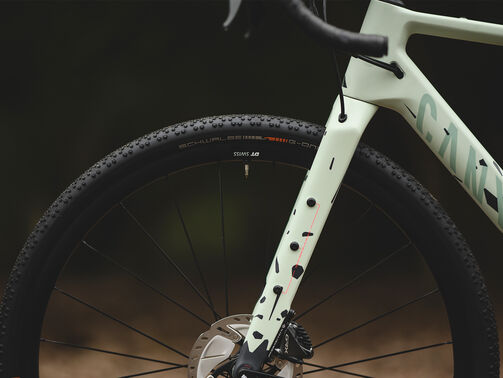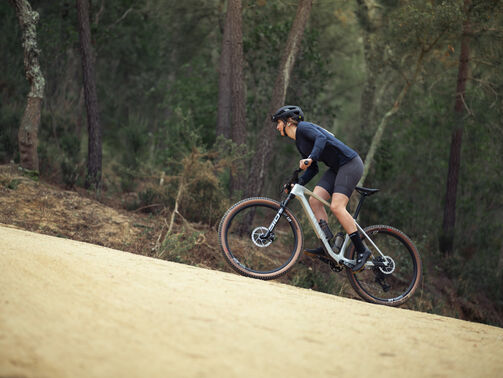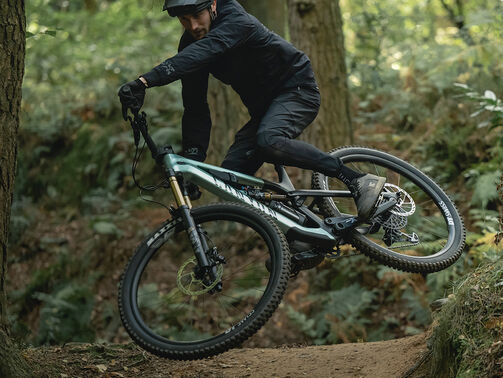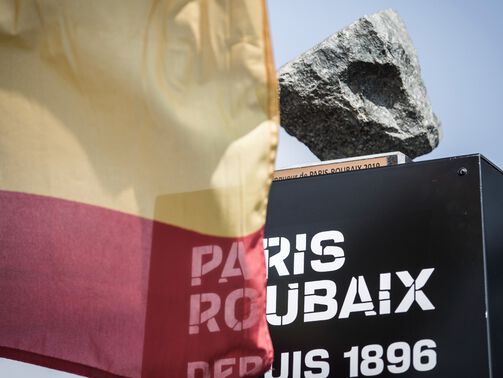Why the Giro d’Italia deserves your attention
Get ready to dive into the Giro d'Italia 2024! We'll cover everything from the race routes and stages to the teams competing for glory.


With defending Maglia Rosa Primož Roglič (Bora-Hansgrohe) likely skipping the Giro d’Italia to focus on the Tour de France, is Tadej Pogačar (UAE Team Emirates) the new pink jersey favorite? Pogačar will attempt to be the first man to achieve the elusive Giro/Tour double victory since Marco Pantani in 1998.
It’s a worthy goal. For the last few decades, the Tour de France has overshadowed the Giro and La Vuelta in the minds of fans (at least those outside of Italy), teams, and sponsors. Riders, including defending champions, too often skip the Giro in order to vie for a yellow jersey in Paris.
But the Giro shouldn’t be ignored. During those three weeks in May, road racing competitors traverse breathtaking scenery, while the fans lining each stage cheer for their favorites, urging them to go faster and achieve greater heights of success. Racers, perhaps sensing that passion and the cycling history surrounding them, push themselves into nearly superhuman feats. It’s a race definitely worthy of our attention and respect.
Contents
Giro d’Italia 2024 in numbers
- Total distance: 3,321.2km
- Total distance climbed: 42,900m
- 3 mountain ranges (Alps, Apennines, and Dolomites)
- 6 summit finishes
- 8 sprint finishes
- 2 time trials
Giro d’Italia history
Since the inaugural Giro in 1909, some of cycling’s most indelible moments have occurred on the roads of Italy. Fausto Coppi, Il Campionissimo himself, destroying the field across five mountain passes on his way to a 1949 Giro win. Eddy Merckx soloing to victory on the Tre Cime di Lavaredo in 1968. (Not only would he win his first grand tour that year, Merckx also won the pink, blue, and purple jerseys in an utterly dominant performance.) Andy Hampsten conquering the Passo di Gavia during an actual blizzard enroute to his Maglia Rosa win in 1988.
What moments from the 2024 Giro will be remembered decades from now? We’ll know soon enough.
When is the Giro d’Italia 2024?
The 2024 Giro d'Italia begins in Turin on Saturday, May 4. The 107th edition of the race will end Sunday, May 26 in Rome with a circuit stage around the Colosseum.
What are the main storylines heading into the 2024 Giro d’Italia?
What pink-jersey contenders will toe the starting line May 4? Besides Pogačar, Nairo Quintana (Movistar), who won the Giro a decade ago and was second in 2017, will be at the Turin start. Both 2022 Giro champion Jai Hindley (Bora-Hansgrohe) and 2020 winner Tao Geoghegan Hart (Lidl–Trek) could return as well. Geraint Thomas (Ineos Grenadiers) has unfinished business in Italy after being edged out of the pink jersey after the penultimate stage last year. Sepp Kupp (Jumbo-Visma), fresh off his La Vuelta victory last September, could potentially vie for a second-straight grand-tour victory, although Jumbo-Visma may prefer to keep the young American fresh to assist defending TdF champion Jonas Vinegaard in the mountains.
Can homegrown talent Giulio Ciccone (Lidl–Trek) contend for the overall victory in 2024, becoming the first Italian to win his home race since Vincenzo Nibali in 2016?
This year’s Giro has multiple stages tailor-made for the sprinters. Kaden Groves (Alpecin-Deceuninck) won Stage 5 of last year’s Giro and will likely be back. Groves’ teammate Jasper Philipsen could also vie for the prestigious purple points jersey, but will likely save his legs for fast French finishes this July.

The Giro d’Italia Route and 5 Notable Stages to Watch
The 2024 Giro d’Italia route consists of 21 stages (and two well-deserved rest days) across the hills, flats, and mountains of Italy throughout three weeks of racing. While there will be plenty of exciting racing early in the Giro, it likely won’t be until stage 15 when the GC contenders start battling in earnest, as they enter the high mountains and hit some of the toughest back-to-back-to-back stages of any grand tour this year. Here you can read more about iconic climbs of Giro d'Italia.
At the end of the three weeks, we'll finally find out the winners of the prized Giro d’Italia jerseys – pink for the overall winner, blue for the mountain classifications winner, purple for the winner of the points classification, and white, won by the best 25 and younger rider on the general classification.
Giro d’Italia 2024: Stage 2
San Francesco Al Campo - Oropa ,150km, Mountains (summit finish).
The peloton will need to be at top form almost immediately, as the race’s first summit finish comes on Stage 2. The first 80km of the race is mostly flat, then trends upward to the Santuario di Oropa finish. Although the average grade of the nearly 12km uphill is only a little more than 6 percent, some sections can be as steep as 13 percent – perhaps ideal spots for attacks.
- Oasi Zegna, Category 3
- Nelva, Category 3
- Santuario di Oropa, Category 1, 11.8km long with an average gradient of 6.2%
Giro d’Italia 2024: Stage 6
Viareggio - Rapolano Terme, 177km.
The peloton will have to contend with about 12km of gravel roads on this stage, including a nearly 5km climb up the Category 4 Grotti. Veterans of the Strada Bianche classic will likely know these roads well, so look for a rider like former Strada Bianche winners Mathieu Van Der Poel (Alpecin-Deceuninck) or Wout van Aert (Visma-Lease A Bike) to take the victory today. Pogačar has also won that race, but it remains to be seen how aggressive his UAE Team Emirates team will want to be this early in the Giro.
- La Bertesca, Category 4
- Grotti, Category 4
Giro d’Italia 2024: Stage 15
Manerba del Garda - Livigno, 220km.
The longest stage of the race, this will also be one of the toughest for competitors and exciting for spectators. The run up the Cat 2 Colle San Zeno could be a dress rehearsal for the action happening later in the stage. After the descent of the Cat 3 Aprica climb, racers will have a steep 15km uphill before a 5km respite. That’s when the 18km Forcola Di Livigno climb begins in earnest. After a 12km descent, the day’s victor will be decided by the 8km climb up the Mottolino slope to the finish, the gradient topping out at 18 percent in places. Expect all the GC contenders to be battling it out amongst each other here.
- Lodrino, Category 3
- Colle San Zeno, Category 2, 13.9km long with an average gradient of 6.6%
- Aprica, Category 3
- Forcola Di Livigno, Category 1, 18km long with an average gradient of 7.1%
- Livigno (Mottolino), Category 1, 8.1km long with an average gradient of 6.6%

Giro d’Italia 2024: Stage 17
Selva di Gardena in Gröden - Passo del Brocon, 154km.
Today’s stage starts out with a bang, a nearly 9km march up the Passeo Sella, and the action won’t stop until the Passo del Brocon summit finish 159km later. The riders will actually cross the Brocon pass twice during this brutal stage.
- Passo Sella, Category 2, 8.9km long with an average gradient of 7.4%
- Passo Rolle, Category 1, 19.8km long with an average gradient of 4.8%
- Passo Gobbera, Category 3
- Passo Brocon, Category 2, 13.3km long with an average gradient of 6.5%
- Passo Del Brocon, Category 1, 12.2km long with an average gradient of 6.4%
Expectations leading to the race?
The 2024 Giro d’Italia promises to be a fast-paced, competitive affair, with fewer meters of climbing than recent memory and more time-trial miles than either of the other two grand tours. This should produce more balanced racing and potentially open the door for an unexpected champion. Whether or not the route encourages major TdF contenders other than Pogačar to attempt the famed Giro/Tour double victory remains to be seen.
Canyon riders to watch
Reunited with Movistar, Quintana returns to Italy as his team’s Giro leader. A decade after his lone Giro victory, will he be able to turn back the clock and wear pink once more? At the very least, Quintana should contend for a stage victory in the mountains.
Alpecin-Deceuninck has yet to announce its full team for the Giro. Sprinter Kaden Groves won a stage at last year’s Giro (as well as the three stages and the points classification at La Vuelta España 2024), and assuming he’s in good form, will likely be back. Current world champion Mathieu Van Der Poel looks to dominate the spring classics again this year; it’s unknown if he’ll participate in this year’s Giro or rest up for the Tour and Paris Olympics. In the upcoming Giro d'Italia 2024, both Alpecin Deceuninck and Movistar will rely on Canyon's top road bikes, namely the Canyon Aeroad and Speedmax, to lead their riders to victory.
How to watch the Giro d’Italia 2024
There’s no better way to experience the Giro than attending the race live. But for those of us who can’t afford to take three weeks off work to attend a bike race and eat pasta, these networks will be broadcasting the Giro d’ Italia, either through daily highlights or start-to-finish coverage.
- Eurosport (Europe)
- beIN Sport (USA)
- SBS (Australia)
Discover our Road Bikes
Did this article help?
Thank you for your feedback
-
 About the author
About the authorRobert Annis
Robert Annis is an award-winning outdoor-travel journalist. As an experienced writer and sport enthusiast he writes content that is inspiring with focus on road biking. You might have read Robert's articles in Bicycling, National Geographic, Outside, Travel + Leisure, Inside Hook, AARP, Midwest Living, Sierra, Hemispheres, Departures, Lonely Planet, Afar, Los Angeles Times, Chicago Tribune, RV Magazine, and Hidden Compass.










